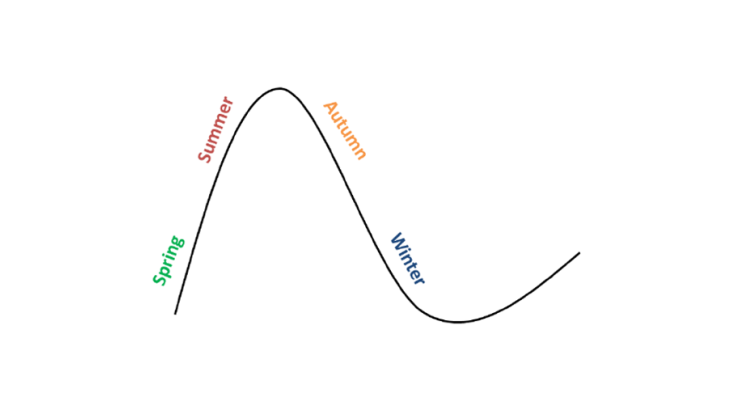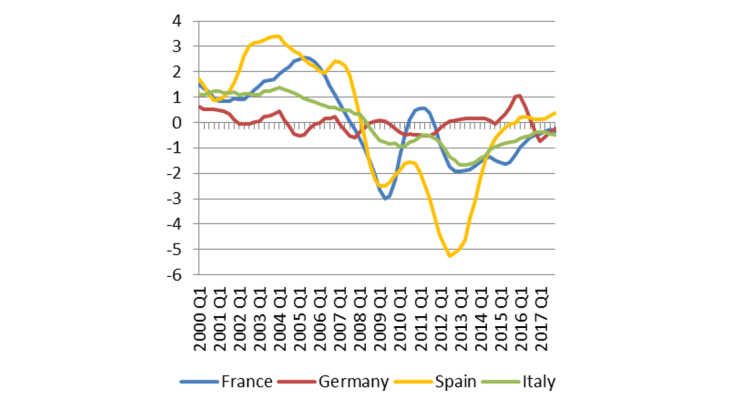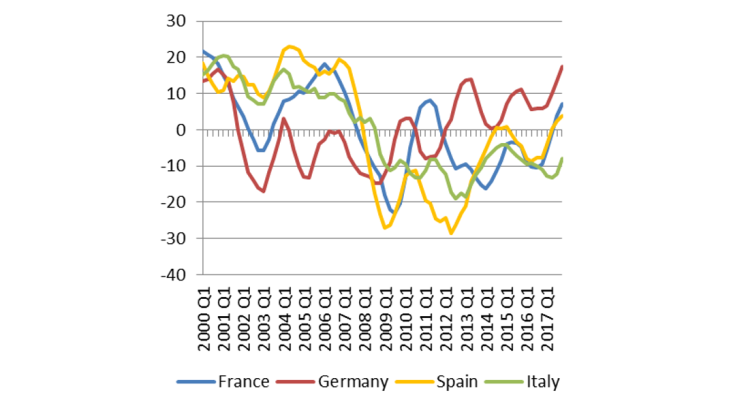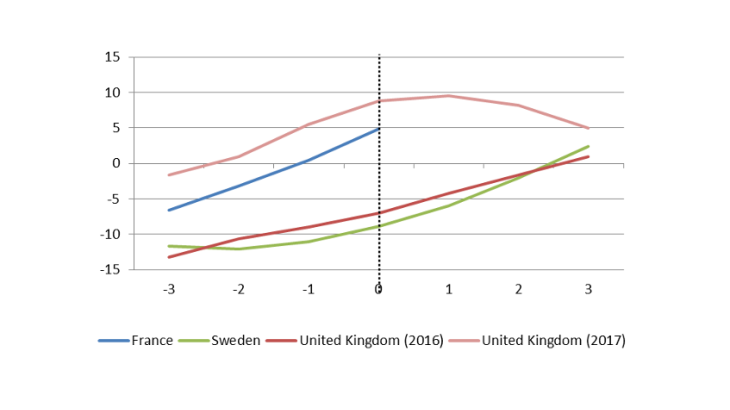What is financial cycle ?
Analysing financial cycles enables us to better understand, anticipate and prevent the consequences of their turnaround. However, there is no clear and commonly accepted definition of the financial cycle. According to Borio (2014), the financial cycle refers to "self-reinforcing interactions between perceptions of value and risk, attitudes towards risk and financing constraints, which translate into booms followed by busts". In other words, when all goes well, economic players who are collectively optimistic (but potentially short-sighted) may take greater risks that could lead to the formation of financial imbalances. Conversely, during a downturn, previously accumulated imbalances are resolved, sometimes quite suddenly, which leads banks (investors) to restrict their supply of credit (financing), thus accentuating the amplitude and length of the following recession phases. Schematically, the financial cycle can be divided into four phases.
- Spring is the upswing in the cycle when economic prospects improve: confidence returns which fosters lending and investment, financial constraints are eased, debt rises and asset prices increase; at the same time, risks pick up but remain under control.
- Summer (or even heatwave) is the phase of overheating during which excess confidence and an underestimation of risks lead to asset price bubbles and runaway debt due to the easing of financial constraints. In addition, the correlations between market segments or countries rises, as reflected in the synchronisation of asset price increases and risks.
- Autumn is characterised by the turnaround in the cycle: confidence vanishes (often as a result of the first negative events caused by excessive risk-taking in the summer), leading to a sudden tightening of financial constraints, an increase in counterparty risk, a fall in asset prices and a reduction in debt. The economy is plunged into a financial winter during which the summer imbalances are resolved.
- Lastly, winter is the phase where the vulnerability of financial system players, the depressed economic outlook and strong financial constraints fuel a recessionary climate during which the financing of the economy is constrained. It is followed by a long and costly period of adjustment during which imbalances are resolved before a new financial cycle begins
The main difficulty, despite this repetition of the "seasons", is that you never know how long summer will last and yet, invariably, there is a winter: "Winter is coming". There is also the question of the magnitude of each phase, especially winter: the downward phase of the cycle may be smooth but it may also turn into a severe and costly financial crisis. Being able to concretely observe the cycle dynamics over time and establishing the position of a country in the financial cycle is therefore a very delicate exercise but one of paramount importance for implementing a suitable macroprudential policy.
How to statistically measure the financial cycle?
The list of indicators used to capture the financial cycle is not set in stone. Two elements, however, can be found in the vast majority of methodologies: debt and real estate prices (see Merler (2015), Chart 2). Indeed, these two variables have been at the heart of the major financial crises in recent decades (in 2008 in the United States, Ireland and Spain, and in the early 1990s in France and the Nordic countries). Other "revealing" indicators of the financial cycle are increasingly integrated (equity prices, bond prices) to better reflect the diversity of the financial system (see Schuler, Hiebert, Peltonen (2015), Chart 3). Once the list is closed, different statistical methods may be used both to aggregate these indicators and to account for their common dynamics. These measurement uncertainties justify the large variety of methods.



